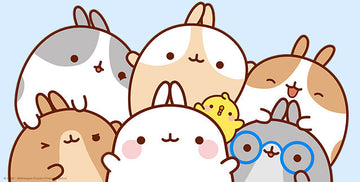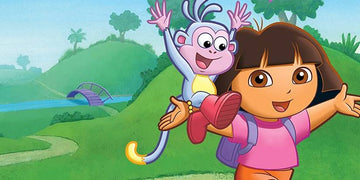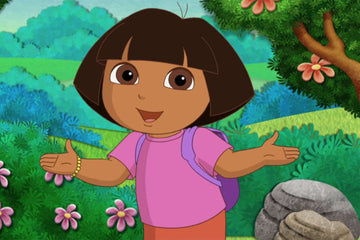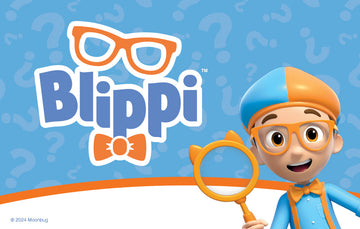Choosing the perfect toy for a toddler can feel like navigating a minefield. With an overwhelming number of options, how do you know what's truly suitable? I'm here to help you decode the world of toddler toys, and guide you to make choices that'll both entertain and educate your little one.
In this journey, we'll explore the importance of age-appropriate toys, and delve into the benefits they have on a toddler's development. So, whether you're a parent, grandparent, or a friend looking for the ideal gift, stay tuned. Together, we'll uncover the secrets of selecting the most appropriate toy for a toddler.
Understanding the Importance of Age-Appropriate Toys
Toys play an integral part in a toddler's life, serving far more significant roles than just being sources of entertainment.
The Role of Toys in Toddler Development
Toys act as catalysts for a toddler's development. They provide the first lessons that a child grasping the workings of the world encounters. For instance, a simple stacking toy can help them understand shapes, sizes and colors, while also improving their hand-eye coordination and concentration skills. Action figures can become vehicles for imaginative play, helping children express their feelings and develop their language skills.

Safety Concerns associated with Inappropriate Toys
It's crucial to consider safety when choosing toys for toddlers. Toys with small parts can pose serious choke risks, while those with sharp edges can lead to injuries. Furthermore, giving advanced toys to a toddler may lead to frustration instead of fostering learning. On the other hand, toys meant for younger kids might no longer stimulate a toddler sufficiently, resulting in fleeting interest and missed opportunities for skill development.
Remember that the choice of toys impacts your toddler's security, happiness, and their physical and mental development. Therefore, taking some time to select age-appropriate toys isn't just essential—it's imperative.
Identifying the Developmental Stages of a Toddler
Understanding the unique developmental stages of your toddler is instrumental in choosing the right toy. Here's what you need to keep in mind:

The Physical Development Stage
During this stage, toddlers, generally aged 12 to 36 months old, acquire crucial motor skills. They start to walk, run, climb, and even dance. For this stage, look for toys that can support their growing physical agility. Simple ride-on toys, blocks, push and pull toys, balls of different sizes are great choices.
The Cognitive Development Stage
At this stage, a toddler's brain development accelerates. They start recognizing shapes, colors, and even begin to solve problems. Puzzle toys, shape sorters, stacking blocks, and picture books that align with their cognitive abilities are fantastic to inhibit their learning curve at this date.
The Socio-Emotional Development Stage
Toddlers at this stage begin to understand emotions and social interactions. Led by curiosity, they start to mimic adults, interpret human emotions, and even display independent behavior. Role-play toys, dolls, stuffed animals, and interactive board games could be best to promote their socio-emotional skills.
Remember, every child is unique and may reach these stages at their own pace. Therefore, observe, understand, and then choose the best toy that aligns with their current developmental stage. Choosing a toy that suits their age, interests, and abilities can boost their confidence and foster better learning.
Top Toy Recommendations for Toddlers
Understanding different toddler developmental stages enables us to select the most suitable toys to aid their growth. Let's explore some top-recs for your little ones.
Exploration and Manipulative Toys
When it comes to exploration and manipulative toys, these are my top choices:
- Shape sorters: These toys are fantastic for improving hand-eye coordination and shape recognition. For instance, the Melissa & Doug Shape Sorting Cube is a simple yet effective tool where toddlers match the blocks to the corresponding holes on the cube.
- Stacking blocks or rings: Stacking toys aren't just fun, they also help develop fine motor skills and understanding of size relationships. The Fisher-Price Brilliant Basics Stack & Roll Cups are durable, colorful, and educational.
- Button art toys: These toys work wonders on color recognition and hand dexterity. An example is the ALEX Toys Little Hands Button Art, where toddlers match individual colored buttons to pictures.
Pretend Play and Creative Toys
For sparking creativity and imaginative play, consider these toys:
- Play kitchen sets: Engaging in pretend play with kitchen sets can boost your toddler’s socio-emotional development and life skills. For instance, Step2 Fun with Friends Kitchen Playset includes a pretend stove, oven, and other kitchen essentials.
- Dolls and soft toys: These are quintessential to toddler pretend play and teaching empathy. Brands like American Girl and Jellycat offer a myriad of engaging soft toys and dolls for toddlers.
- Simple dress-up costumes: Creative play can be enhanced through role-play with costumes. Melissa & Doug Role Play Collection is a fantastic starting point, with numerous costumes to choose from.
Physical Activity and Motor Skill Development Toys
Here are some outstanding toys that promote physical activity and motor skill development:

- Push and pull toys: These toys are great for walkers. An example is the Hape-Push & Pull Wooden Puppy, which can boost motor skills and balance.
- Tunnel toys: Tunnels like the UTEX 3 in 1 Pop-Up Play Tent can offer an exciting way to develop gross motor skills, problem-solving and imaginative play.
- Ride-on toys: These stimulate gross motor skills and balance. Fisher-Price's Harley-Davidson Tough Trike and Little Tikes Cozy Coupe are stunning choices that your toddler will love.
How to Determine If a Toy is Suitable for Your Toddler
Choosing the right toy for your toddler goes beyond fun. It needs to be safe and effective in aiding their development. But how can you determine this? Here are three steps I suggest:
Checking Toy's Safety Certifications
First on the list is safety. Always check if the toy has safety certifications. Most manufacturers put this information on the product packaging or their website. Safe toys for toddlers usually have certifications from recognized bodies such as the American Society for Testing and Materials (ASTM) or the Consumer Product Safety Commission (CPSC). For EU-based toys, look for the CE mark. Certification assures that the toy is free from harmful substances and meets essential safety standards.
Reviewing Toy's Age Suitability Label
Next, look at the age suitability label. Most toys come with an age guideline. This isn't about how smart your kid is. It's about safety and developmental appropriateness. For instance, toys labeled for ages 3 and up often contain small parts that can be choking hazards for younger kids. Always adhere to these guidelines when picking toys for your toddler.
Assessing Toy’s Educational Value
Last but not least, evaluate the toy's educational value. Toys are not just playthings. They are tools that jumpstart learning and help develop key skills. Choose toys that align with your toddler's developmental stage. For example, stacking blocks help toddlers improve fine motor skills and hand-eye coordination. Shape sorters are great for teaching problem-solving. Remember, the best toys for toddlers are the ones that stimulate their curiosity and encourage interactive play.
Tips for Choosing the Best Toddler Toys
Selecting the right toy for your toddler can feel overwhelming with so many options available today. Here are my tried-and-tested tips to make the task a little easier and ensure that you select both safe and beneficial toys.

Prioritizing Open-ended Play Toys
Invest in toys that promote open-ended play. These toys, such as blocks, playdough or pretend play sets, don't restrict children to a single correct response or result. Instead, they allow toddlers to experiment, test the limits of their imagination, and create their own narratives. Open-ended toys support various developmental aspects, including creativity, cognitive development, and social-emotional skills. For instance, a simple set of wooden blocks can serve as a house, bridge, or train, depending on the child's imagination.
Opting for Battery-Free Toys
Though it might sound old-school, opting for battery-free toys is another tip I can't stress enough. These types of toys foster a sense of independence in toddlers as they're in control of how the toy works rather than a battery deciding the play pattern. Manual toys also encourage skills like problem-solving and critical thinking. Examples of battery-free toys include puzzles, nesting cups, or shape sorters.
Balancing Indoor and Outdoor Toys
Lastly, maintain a healthy balance between indoor and outdoor toys. Indoor toys like board games or craft kits are fantastic for cognitive and fine motor skills. However, outdoor toys like tricycles, swing sets, or sandbox toys contribute significantly to a toddler's gross motor skills, physical fitness, and natural curiosity. Having a mix ensures your toddler benefits from varied environmental stimuli, aiding well-rounded development.
Once you've chosen the perfect toys, don't forget to consider clothes that are both comfortable and stylish for your toddler's playtime. Sandilake Clothing, featured on Shark Tank, provides a range of winning outfits perfect for both indoor and outdoor play. Relish their trendy creations by exploring some of their best-sellers.
Addressing Common Questions in Choosing Toddler Toys
As we delve deeper into the complex world of toddler toys, let's address three common queries that keep popping up.
Are Electronic Devices Suitable as Toys for Toddlers?
While it's easy to hand over an iPad or smartphone to keep our little ones entertained, it may not be the best practice. American Academy of Pediatrics suggests limiting screen time for toddlers to one hour per day of high-quality programs. Aim for toys that stir imagination and physical activity over electronic devices. Their overuse can hamper a child's development of critical thinking and social skills.
Is it Beneficial to Have Gender-Specific Toys?
In my view, toys shouldn't be gender-specific. A study from Archives of Sexual Behavior shows that children who play with a variety of toys, regardless of the gender connotations, are likely to develop a broad range of skills. Boys can learn a fair share about nurturing with a doll, just as girls can foster problem-solving skills while playing with blocks.
Enlightening Case Studies: Relevance of Age-Appropriate Toys
Digging into real-life examples can shine a bright light on the importance of suitable toys for a toddler's development. Here, I'll share two pivotal case studies illustrating the significance of educational and non-digital toys over noisy or technology-centric options.
A Case Study Showing the Triumph of Educational Toys over Noisy Toys
In 2018, the leading psychologist, Dr. Claire Verden, conducted a study with 30 toddlers aged 2 to 3 years. They got divided into two groups, each given different types of toys. Group one received educational toys like blocks and puzzles, whereas group two was given noisy battery-operated toys.
In her study, Verden noted that the first group, armed with their educational toys, showed significant improvement in critical thinking and problem-solving skills. On the other hand, the second group exhibited a lack of focus and subpar problem-solving skills. This case study thus illuminates the advantages of educational toys, suggesting their superiority over distracting, noisy toys.
A Case Study Highlighting the Importance of Non-Digital Toys for Toddlers
The Child Development Institute conducted an observational study in 2017 to explore the effects of non-digital toys. In this study, toddlers who spent their playtime with non-digital toys showed more creativity and developed superior physical skills compared to toddlers who played with digital toys. They also displayed a richer vocabulary, illustrating the indirect correlation between language development and the type of toys used. The study clearly states the benefits of non-digital toys, underscoring their importance in nurturing a toddler’s overall developmental growth.
As we wrap up the article, it's worth noting that a perfect accompaniment to these educational toddlers' toys could be comfortable play attire. If you're searching for unique, stylish, and comfortable clothes for your little ones, consider Sandilake Clothing, a Shark Tank-featured favorite. Explore their best-sellers, or specific collections for girls, boys, and babies. Let your toddler play, discover, and learn in style.
Key Takeaways
- Toys play a critical role in a toddler's development, serving as an educational tool that helps them understand the world around them, develop hand-eye coordination, language skills, and explore their imaginative capabilities.
- Safety should be a top concern when choosing toys for toddlers. Avoid toys with small parts or sharp edges as they could pose choking risks and cause injuries.
- Toys should be chosen according to a toddler’s unique developmental stage. The stages include the physical development stage, the cognitive development stage and the socio-emotional development stage. Age-appropriate toys support motor skills, cognitive function and socio-emotional skills development.
- Some recommended toy types for toddlers include exploration and manipulative toys, pretend play and physical activity promoting toys. These help in improving coordination, encouraging imaginative play, and accelerating motor skill development.
- It's necessary to review toys' safety certifications, age suitability label and educational value before buying. Certifications ensure safety standards are met, while age ratability labels guarantee appropriateness and maximum developmental value.
- When choosing toys, prioritize open-ended play toys, battery-free options, and balance between indoor and outdoor toys. These types of toys foster imagination, independence, critical thinking, environmental stimuli exposure, and well-rounded growth.
- Electronic devices should not replace traditional toys, and toys should not be restricted to certain genders. Limited screen time and a variety of toys can reinforce a range of skills, critical thinking, and social skills.
- Case studies have reflected the superiority of educational, non-digital, and gender-neutral toys over noisy, digital, or gender-specific toys. These alternatives have been proven to considerably boost a toddler's cognitive, social, and physical capacities.
Conclusion: The Impact of Choosing the Most Appropriate Toy for a Toddler
Finding the right toys for your toddler isn't just about fun and games. It's about fueling their development, sparking their creativity, and ensuring their safety. Educational toys like blocks and puzzles aren't just playthings; they're tools for building critical thinking and problem-solving skills. Non-digital toys aren't outdated; they're essential for fostering physical skills and language development. It's not about shunning electronic devices, but about limiting screen time and diversifying toy options. And remember, playtime isn't just about the toys. It's also about comfort and style, and brands like Sandilake Clothing have got you covered. So, when you're picking out toys for your toddler, remember - you're not just choosing a toy. You're choosing an experience, a learning opportunity, and a stepping stone towards their growth. Make it count.





